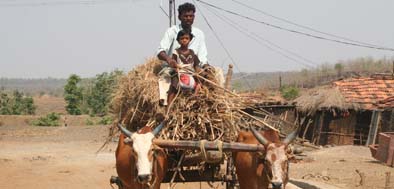India is playing an ever-important role in the world’s cotton market. Set to bypass the United States and become the world’s second largest producer of cotton in 2007, India has seen its cotton sector undergo critical changes in recent years. This handbook explores the various facets of cotton production in India — from the introduction of biotechnologies and the subsequent increase in production to the despair of small-scale cotton farmers — and analyzes the domestic and international forces at play. Cotton subsidies and agricultural policy are closely examined.
Countries That Receive Subsidies
Several major cotton producing countries protect their cotton sector by providing direct and indirect support to their farmers. Direct government assistance provided to the cotton sector worldwide was estimated to increase from $4.7 billion in 2004/5 to 5 billion in 2005-6. Cotton farmers in China, the U.S. and the E.U. (Greece and Spain) receive the highest level of direct income and price support. In China, support of the cotton market was expected to double from $1.1 billion in 2004/05 to $2 billion in 2005/06. Responding to international pressure to cut their farm subsidies, the U.S. and the European cotton support programs were set to decline slightly over the same period of time. In the U.S., support was to fall from $2.39 billion in 2004/05 to $1.918 billion in 2005/06. Similarly, the EU’s income support was to decrease from $1.1 billion in 2004/05 to $900 million in 2005/06. Even though India is one of the world’s largest cotton producers, it does not make direct cash payments to its cotton farmers. Instead, the federal and state government of India subsidize the purchase of water pumps, well bores, seeds and fertilizers.
A Debate Between Developed and Developing Nations
Developing countries that grow cotton for export have reproached Western nations for granting their cotton farmers trade-distorting subsidies. For West African nations including Mali, Burkina Faso, Chad and Benin, the revenue drawn from exporting cotton represents most of their national income. For these countries, it is critical to receive a price that covers the cost of production faced by their cotton farmers. These countries argue that payments made to U.S. and European farmers encourage overproduction and lead to depressed world prices for cotton. A study conducted by the non-governmental organization Oxfam America in 2007 estimates that the elimination of U.S. cotton subsidies would increase the world price by between 6 and 14 percent.
Disputes regarding subsidies and trade issues are investigated and settled by the World Trade Organization (WTO). The current round of negotiations at the WTO is known as the Doha Development Agenda. In 2002, Brazil brought a case against U.S. cotton subsidies that successfully led the U.S. government to cut some of its payments to farmers in 2006. In 2004, the West African nations of Mali, Burkina Faso, Benin and Chad proposed a cotton initiative requiring developed countries to cut trade-distorting subsidies that affect market access, domestic support and export competition. These countries also requested to receive financial compensation for the losses incurred while these subsidies are phased out. As of 2007, no agreement had been reached.
Why Are Subsidies Necessary?
Subsidies help protect farm revenue. Crop yields are dependent on local weather and contribute to the fluctuating nature of the agricultural industry. Fluctuations in production levels and prices result in volatile revenue for the farmers. Price support and income guarantees can help smooth farmers’ income over time and ensure that farmers are not required to maintain a hefty float from year to year in order to maintain a consistent cashflow. In addition, agricultural subsidies provide food security by stabilizing food prices and sustaining minimum nutritional support to the poor at an affordable price.
Sources: International Herald Tribune; The Financial Express; UNDP-Asian-Pacific Human Development Report 2006; Food and Agriculture Organization of the United Nations United States Department of Agriculture
- Previous: Agriculture in India
- Next: Cotton Production and Consumpt...



